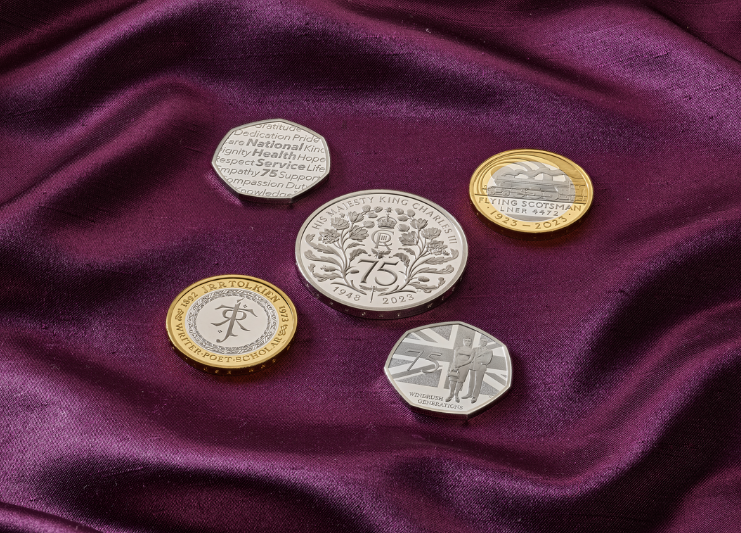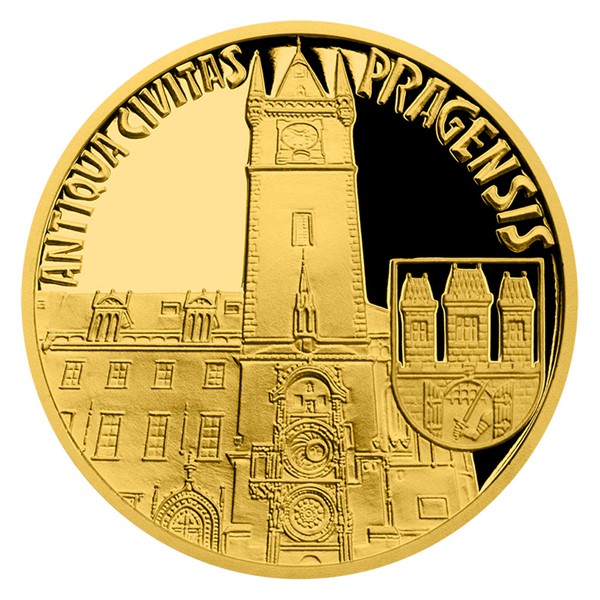Handy Ideas For Hand Polishing Prague Mint Coins
Wiki Article
What Is The Reason And How Can An Image Made From Plaster Converted To Create A Digital 3d Representation For Gold Medals Or Coin?
The process employs specially designed equipment to digitize a maquette and record its dimensions. The digital copies are utilized for various uses during production.
3D Scanning Technique - High resolution 3D scanners are able to record dimensions and other details on the plaster models. The scanners can record measurements and geometrical information using various methods such as laser scanning or structure lights.
Surface Information Capture - The scanner emits laser or light beams on the model's surface. The scanner captures the distortions and reflections the beams create, thereby recording the surface information.
Data Collection. When the scanner is moving over the model it gathers a lot of data points. The result is a digital representation of the model's shape and contours or other details.
Conversion to 3D Model. Specialized software reconstructs information from the collected information into a 3D model. The model recreates the physical properties and measurements of a maquette made of plaster.
What are the motivations for making an electronic 3D model?
Precision and Replication- Digital 3D models enable exact replication of the model's features and dimensions. This accuracy is essential to ensure that gold medals or coins are in line with the original design.
Digital models allow for easy adjustment or reworking. Designers can modify an 3D model, but not alter the maquette that was originally created.
Compatibility with Manufacturing ProcessesCompatibility with Manufacturing Processes Digital 3D models are compatible with different manufacturing processes including CNC machining or 3D printing and enables the creation of molds or dies for mass production.
Digital 3D model archives and documentation Digital models are archived as records of design. Digital models are saved for future use, reproductions or historical documentation.
By scanning models of plaster and creating 3D digital models, manufacturers and designer can speed up their processes of production and ensure the accuracy of reproduction and utilize advanced manufacturing technology to produce gold coins and gold medals with a high degree of precision and fidelity. See the top Scanning and 3D Modeling Czechoslovakia gold coins website examples. including american eagle gold coin 1 oz, 2000 olympic, 1 10 oz american gold eagle, george washington gold dollar coin, 1 10 oz gold coin, 1 ounce of silver, gold eagle coin, liberty head nickel, sacagawea gold dollar, silver double eagle and more.

Why Are Dies For Gold Medals And Coins Vacuum Hardened?
The vacuum hardening process used for dies in striking gold coins or medals involves placing the dies in extreme temperatures and controlled conditions in a vapor furnace. This is a brief overview of how to harden dies using vacuum.
When creating dies to be used to strike metals or coins, it's essential that they are free of contamination or residues.
Loading into Vacuum Furnace
The dies will be put in a vacuum chamber, which is a specialized heat-treatment room capable of creating vacuum.
Evacuation from Air-
The vacuum furnace eliminates air from the chamber, resulting in a controlled vacuum environment devoid of oxygen and other gases. This stops oxidation, and ensures uniform heat treatment.
Heating Phase
The furnace is then heated to a certain temperature to harden the dies. The temperature range depends on the particular material and the hardening process.
Soaking at high temperatures-
The dies remain at the elevated temperatures for a specified time, which allows the material to reach the hardness that is desired and to maintain metallurgical structures.
Cooling and cooling as well as quenching
Following the soaking process and the dies are then cool or quenched with specialized techniques. Rapid cooling helps to lock the desired strength and hardness in the steel.
Tempering (Optional)Tempering (Optional)
In certain cases, hardening process is followed by a tempering process. Tempering involves heating the dies up to a lower temperature in order to alleviate stress while preserving the toughness.
Quality Control and Inspection
The molds that are hardened are examined and tested to make sure that the dies meet all of the specified requirements.
Post-Treatment Handling-
Dies, once the vacuum-hardening process is complete, could be further processed like polishing and coating before they are used in strike of coins or medals process.
The process of forming a vacuum enhances the strength, durability, resistance to wear, and the life span of dies used to create coins or medals. The vacuum hardening process is a reliable and consistent way to harden dies in a controlled, safe environment free of any contaminants. Check out the best vacuum hardening Prague Mint gold coins more advice including gold dollar coin, silver double eagle, sovereign british coin, gold and silver bullion, gold bullion price, gold price apmex, old silver coin, gold coin gold, $5 gold coin, 1 10 oz gold eagle and more.

How And Why Do High-Quality Gold Blanks Get Weighed And Assessed And Ready For Minting Process?
The finest gold blanks are expertly made ready for minting to ensure the production of exact and consistent gold medals or coins. The process which is followed: Preparation Gold Material selection- Only high quality gold is used when creating blanks. The gold is refined until it meets the requirements for purity required for coinage.
Gold Blank Production- The gold is formed into blanks through the process of blanking, also known as blank-cutting. Blanking is cutting the gold into disks that are planchet size or coin size with the help of stamping or special machinery.
Precision Measuring and Weighing
Weighing - Each of the blanks is weighed individually to ensure it is in line with the weight requirements of the coin or the medal. This ensures that the coin or medal has exactly the right quantity of gold.
Measuring. Instruments that are precise are used to determine the diameter, height and dimensions of each blank. This ensures the uniformity of measurements and conformity with design specifications.
Inspection and Quality Control
Visual Inspection: Each blank undergoes visual inspection to detect imperfections in the surface, irregularities or impurities that could impact the final product's quality.
Rejecting Nonconforming Blanks To ensure consistency, we reject blanks that are not in conformity to the specifications for dimensions, weights, and quality standards.
The Motives for Preparing
Consistency of Minting ProcessPrecision-weighed and measured blanks ensure consistency in the process of minting. Consistency in weight and dimensions ensures uniformity in the striking process and produces coins and medals with the same weight and quality.
Accurate Gold Content: Each blank is precisely weighed to make sure that the final coin, or medal, contains the exact amount of gold intended. This assures precision in both value and purity.
Uniform Blanks - Eliminate the occurrence of variations in weight or size which may impact on the coin’s or medal’s value, legality or usability for trade or circulation.
Quality Assurance - Strict control measures are taken in the process of making blanks to ensure that only the best quality blanks. free from defects, proceed to the minting procedure which reduces the risk of defects appearing in the finished products.
Legal Compliance - It is important that coins intended for use in circulation or for commemorative purposes conform to specifications and meet the legal specifications.
Preparing high-quality blanks with accuracy and precision is a vital part of the process of minting. This ensures the production of gold coins that are precise and medals that are high in value and complies with the law. Take a look at the recommended gold blanks for Czechoslovakia gold coins more info including 20 dollar coin, gold coin 24k price, old silver dollars, buy gold and silver, gold coin shops near me, gold coin 24k price, gold morgan dollar, canadian gold maple leaf coin, american eagle gold coin, 1 oz gold bars and more.

What Is The Process Gold Blanks Put Into Coin Presses To Be Stamped Under High Pressure During Minting?
In the process of minting the gold coins and medals are created by stamping them under pressure. This article provides a brief description of the steps in loading blanks.
In a feeder system connected to the press, gold blanks are prepared prior to the press and quality checked. This feeder system guarantees a steady flow of blanks.
Blanks for Feeding to the Press
The feeder system is able to guide the blanks one at a time into the chamber for striking of the coin press. This allows for precise placement of each blank for stamping.
Alignment & Positioning
Within the press, the blanks are aligned and placed in the striking chamber, ensuring that they are perfectly centered and aligned for the stamping process.
Striving under High Pressure
The coin press presses the gold blanks with the highest pressure using two dies, one stationary and the other moving. The stationary die is the negative impression of the coin's design, and the one that moves is the hammer that hits the blank.
The die is moved and struck the blanks using a lot of force. The design is transferred to the surface of the blank. Die dies pressurize the design and create relief raised on the medal or coin.
Repeated Striking Optional
To create an image or design that is clearer and better defined, multiple strikes may be applied on high-quality coins or collectible editions. Each strike refines the detail in the blank.
Ejection & Collection
The medals or coins will be removed and put in containers or trays once they've been struck. The designs that are stamped are checked for quality control to ensure that they meet the standards and standards.
Post-Processing-
The appearance of the medal or coin could require further processing, such as edge lettering (either edge reeding) or post-strike treatment.
The use of high pressure to stamp, which creates a design onto the gold blanks is vital in that it converts them into finished coins or medals for circulation, collecting or commemoration. The stamping process requires preciseness as slight variations in pressure and alignment could impact the final product's quality. Read the most popular minting Prague Mint gold medals more recommendations. including 2000 sacagawea, gold silver shops near me, liberty head nickel, 2000 gold dollar, 1 ounce gold bullion, coin gold silver, gold quarter dollar, ancient coin, coin buy gold, 1 oz gold buffalo coin and more.
